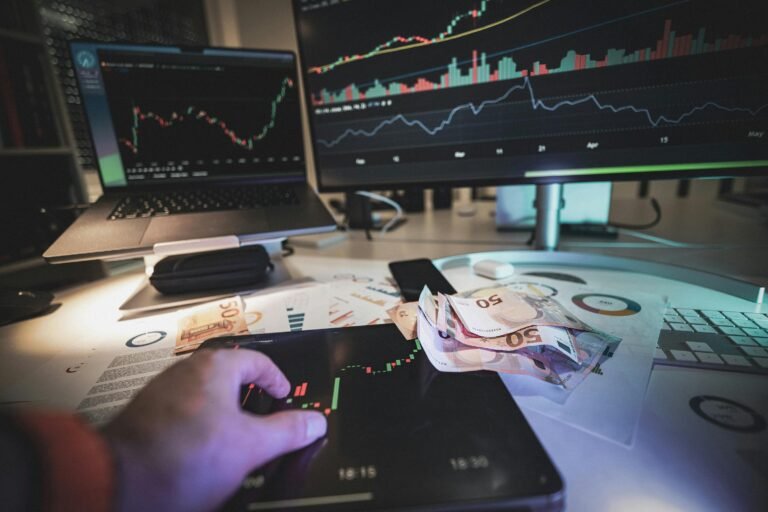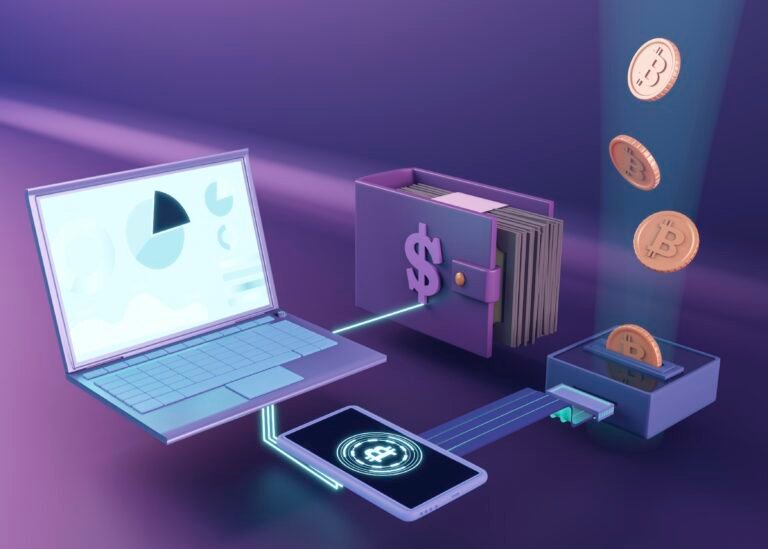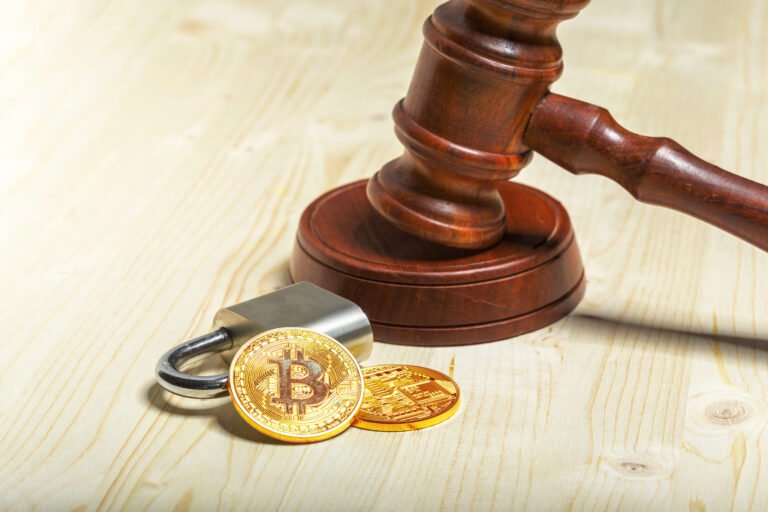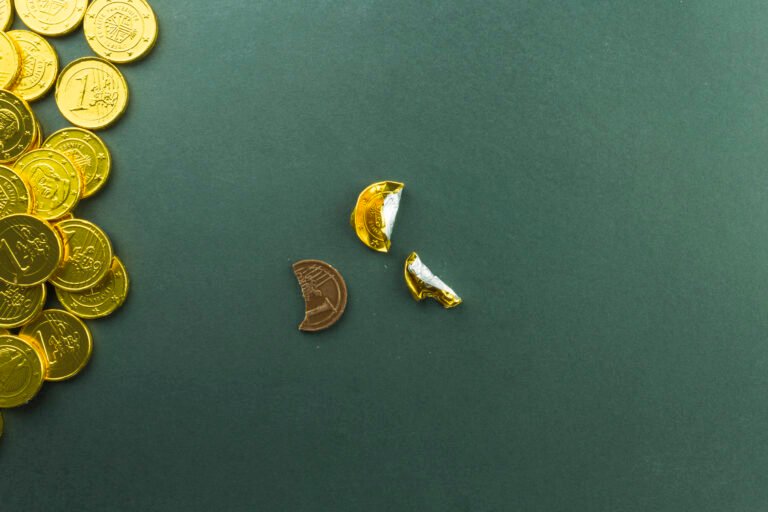7-Step Crypto Trading Guide for Total Beginners
1. Why Learn Crypto Trading in 2025?
Crypto Isn’t Just Hype—It’s a New Financial Frontier
Crypto Trading : Cryptocurrency is no longer just a buzzword. In 2025, it has matured into a serious asset class with real-world use cases, institutional adoption, and opportunities far beyond just Bitcoin and memes. From decentralized finance (DeFi) to digital identity, from gaming to tokenized real estate, crypto is quietly reshaping how we interact with money and value.
More than 400 million people globally now own some form of crypto, and governments are rolling out regulations instead of just warnings. Whether you’re here for the tech, the profits, or just the curiosity—learning how to trade crypto now puts you ahead of the curve.

Table of Contents
What This Guide Will Teach You (And What It Won’t)
This guide is made for total beginners—you don’t need to be a tech expert or financial wizard to follow along. By the end of it, you’ll understand:
- How crypto trading works
- What platforms and tools to use
- How to manage risk and avoid common beginner mistakes
- How to make your first trade with confidence
What this guide won’t do:
- Promise you overnight riches
- Teach complex day-trading strategies
- Push you toward buying any specific coin
Crypto is volatile, risky, and exciting—but with the right foundation, it doesn’t have to be overwhelming. Ready to take your first step? Let’s dive in.
2. Step 1: Understand the Basics of Cryptocurrency
Before you can start trading, you need to know what you’re actually trading. Let’s break it down into the absolute essentials.
What Is Cryptocurrency? (Bitcoin, Ethereum, Altcoins)
Cryptocurrency is digital money that uses encryption (cryptography) for security. Unlike regular money (rupees, dollars, euros), crypto isn’t controlled by banks or governments. Instead, it runs on decentralized computer networks.
- Bitcoin (BTC) was the first cryptocurrency, created in 2009. It’s often called “digital gold” because people treat it as a store of value.
- Ethereum (ETH) came next. It introduced smart contracts—programs that run automatically when conditions are met. This is the backbone of many crypto apps today.
- Altcoins are all other coins besides Bitcoin. Some are serious innovations (like Solana, Cardano, or Chainlink), while others are jokes or scams. Know the difference before you invest.
Blockchain in Simple Terms
Imagine a public notebook that everyone can see but no one can erase—that’s basically a blockchain. It’s a digital ledger that records every transaction securely and transparently.
Each time someone sends or receives crypto, it’s recorded in a “block.” Once that block is full, it’s linked to the previous one—forming a “chain” of blocks.
Why it matters: This technology ensures that no one can fake transactions or spend the same crypto twice. It’s what makes crypto trustworthy without needing a bank.
Coins vs Tokens: What’s the Difference?
This is where many beginners get confused, but it’s actually simple:
- Coins are native to their own blockchain.
- Examples: Bitcoin (BTC) runs on the Bitcoin blockchain, Ethereum (ETH) on the Ethereum blockchain.
- Tokens are built on top of existing blockchains.
- Example: Uniswap (UNI) is a token built on the Ethereum blockchain.
Think of it like this:
If a coin is like a country’s official currency, a token is like a store gift card that works within a specific system. Tokens can represent value, access, voting power, or even ownership of real-world assets.
3. Step 2: Choose a Reliable Crypto Exchange
To trade crypto, you’ll need a place to buy, sell, and store your assets. That place is called a crypto exchange. But not all exchanges are created equal—choosing the right one can make a big difference in your experience, safety, and profits.
Centralized vs Decentralized Exchanges (CEX vs DEX)
There are two main types of exchanges:
- Centralized Exchanges (CEX): These are run by companies (like Binance, Coinbase, or Kraken). You create an account, deposit funds, and the exchange handles everything for you.
Pros:
- Easy to use
- Customer support
- High liquidity (fast trading)
- Fiat on-ramps (you can use your bank or card)
Cons:
- You don’t fully control your funds
- Subject to regulations, hacks, or outages
- Decentralized Exchanges (DEX): These are peer-to-peer platforms (like Uniswap or PancakeSwap) where you trade directly from your wallet.
Pros:
- You control your own assets (self-custody)
- No sign-up or KYC
- Access to smaller or newer tokens
Cons:
- Harder to use
- No customer support
- Risk of interacting with scam tokens
Beginner tip: Start with a CEX to learn the basics safely. You can explore DEXs later once you’re more confident.
Top Beginner-Friendly Exchanges in 2025
Here are some of the best exchanges for beginners this year:
- Binance – Huge selection of coins, low fees, and an easy-to-use Lite mode for beginners
- Coinbase – Great for U.S. and EU users, with simple design and strong security
- Kraken – Known for reliability and helpful support
- Bybit – Gaining popularity for its mix of spot and derivatives trading
- OKX – A rising platform with a strong mix of features and earn opportunities
Make sure the exchange you choose supports users in your country.
What to Look For: Security, Fees, User Interface
When picking your exchange, focus on these key factors:
- Security:
- Does it have two-factor authentication (2FA)?
- Has it ever been hacked?
- Does it offer insurance or proof of reserves?
- Fees:
- Trading fees, deposit/withdrawal fees, and hidden spreads matter—small costs add up fast.
- Some platforms offer lower fees if you use their native token (e.g., BNB on Binance).
- User Interface (UI):
- Is it beginner-friendly or overwhelming?
- Does it have a mobile app?
- Is customer support responsive?
Pro tip: Open free demo accounts on 2–3 platforms before committing. Play around and see which feels right for you.
4. Step 3: Set Up Your Wallet Safely
Once you’ve bought crypto, the next big question is: Where do you store it?
If you leave it on an exchange, you’re trusting them to keep it safe. But if that exchange gets hacked—or locks your account—you could lose everything.
That’s why setting up your own wallet is a smart next step in becoming a real crypto trader.
Hot Wallets vs Cold Wallets Explained
There are two main types of wallets, and the difference comes down to internet connection:
- Hot Wallets are connected to the internet.
Examples: Mobile apps, browser extensions, web wallets
Pros:- Easy to use for daily trading and DeFi
- Fast access to your crypto
Cons:
- More vulnerable to hacking, phishing, or malware
- Cold Wallets are offline and disconnected from the internet.
Examples: Hardware wallets (like Ledger, Trezor), paper wallets
Pros:- Extremely secure (great for long-term holding)
- Immune to online hacks
Cons:
- Less convenient for quick trades
- You must keep the device or backup safe
Bottom line:
Use a hot wallet for active trading or exploring DeFi, and a cold wallet to store larger amounts long-term.
Best Crypto Wallets for Beginners
If you’re just getting started, here are beginner-friendly wallets trusted by the crypto community:
🔥 Hot Wallets:
- Trust Wallet – Great mobile wallet with support for many blockchains
- MetaMask – Popular for browser-based DeFi and Ethereum apps
- Exodus – Desktop + mobile wallet with a beautiful interface
❄️ Cold Wallets:
- Ledger Nano X – Leading hardware wallet, Bluetooth enabled
- Trezor Model One or T – Reliable and secure, trusted for years
Choose based on your goals: if you plan to trade often, go hot; if you plan to hold and protect, go cold.
Protecting Your Assets: Seed Phrases & 2FA
Security is everything in crypto. There’s no “forgot password” button if something goes wrong. Here’s what you must do:
- Back Up Your Seed Phrase:
When you create a wallet, it gives you a 12 or 24-word secret phrase (also called a recovery phrase).- Write it down on paper—not on your phone or computer
- Store it in a safe place (like a locked drawer or fireproof box)
- Never share it with anyone
Whoever has your seed phrase controls your wallet.
- Enable Two-Factor Authentication (2FA):
On exchanges or hot wallets, always enable 2FA (like Google Authenticator). It adds an extra layer of protection beyond just a password.
Crypto Tip: If someone DMs you asking for your seed phrase “to help,” they’re a scammer—run.
5. Step 4: Learn Basic Trading Strategies
Now that you’ve got crypto and a secure wallet, it’s time to start trading. But before you jump in, you need to understand the types of trades and the tools that help you avoid costly mistakes.
Spot Trading vs Margin Trading
These are two major styles of trading, and beginners should start with the first:
- Spot Trading
You buy crypto at the current market price and own it outright.
Example: You buy 1 ETH at $3,000—you now own that ETH in your wallet.
Best for beginners: Low risk, no loans or liquidations involved. - Margin Trading
You borrow money from the exchange to trade with more capital.
Example: You have $500 but trade as if you had $1,500 (3x leverage).
Higher risk: While gains are bigger, so are losses—you can lose more than you invested.
Warning: Don’t touch margin until you’ve mastered spot trading.
Buy Low, Sell High? It’s Not That Simple
This old saying sounds easy—but crypto is volatile and unpredictable. Trying to “time the bottom” or “sell at the top” is nearly impossible, even for pros.
Here are smarter strategies to consider:
- Dollar-Cost Averaging (DCA):
Invest a fixed amount (like $50 or $100) at regular intervals, no matter the price. This smooths out the ups and downs over time. - Swing Trading:
Hold for a few days or weeks, aiming to catch “swings” in price. - HODLing:
Long-term holding, especially for assets like BTC or ETH. Great for avoiding emotional mistakes.
Avoid emotional decisions. Fear, greed, and FOMO (fear of missing out) cause more losses than bad strategies.
Intro to Limit Orders, Stop-Loss, and Take Profit
These tools help you automate trades and manage risk. Let’s break them down:
- Limit Order:
You set the price you’re willing to buy or sell at.
Example: ETH is $3,000 now, but you only want to buy at $2,800—you place a limit buy order at $2,800. - Stop-Loss Order:
This automatically sells your asset if the price drops to a certain level—protecting you from bigger losses.
Example: You bought BTC at $40,000 and set a stop-loss at $38,000. - Take-Profit Order:
This sells your asset when it reaches a target profit.
Example: You bought SOL at $80 and want to sell if it hits $100—set a take-profit order there.
These tools are your best friends in crypto trading. Use them to stick to a plan, not to chase hype.
6. Step 5: Master Risk Management & Psychology
Ask any experienced trader what separates winners from losers in crypto—and most will say it’s not strategy, it’s discipline and risk management. Even with the best plan, poor decisions driven by emotion can wipe out your gains in minutes.
Never Invest More Than You Can Afford to Lose
This is Rule #1 in crypto—and for good reason.
Crypto is volatile. A coin can drop 30% in a day—or shoot up 100% overnight. That excitement is part of the game, but it’s also what makes risk management essential.
- Don’t put your rent money, emergency savings, or borrowed funds into crypto.
- Think of it like this: If your entire investment went to zero, would it ruin your life? If yes—invest less.
Survival matters more than short-term profits. Live to trade another day.
Position Sizing and Diversification
How much you invest in a single trade or coin is just as important as what you’re trading.
- Position Sizing:
Never put your entire portfolio into one coin or trade. Many pros risk 1–5% of their total capital per trade.
Example: If you have $1,000, you might only risk $20–$50 per trade. - Diversification:
Don’t bet it all on one coin. Spread your portfolio across:- Major assets (e.g., BTC, ETH)
- Promising altcoins
- Stablecoins (for safety and yield farming)
Diversification protects you from being wiped out by one bad project or market dip.
Controlling Emotions: FOMO, FUD & Greed
Crypto trading is a mental game—and your biggest opponent is your own emotions.
- FOMO (Fear of Missing Out):
You see a coin pumping and feel like you “must” get in. But often, that’s the worst time to buy—you’re late. - FUD (Fear, Uncertainty, Doubt):
A sudden dump, a scary tweet, or fake news makes you panic sell. Learn to stay calm and fact-check before reacting. - Greed:
You’re in profit, but instead of taking gains, you keep holding, hoping for more… then the market crashes.
Winning traders control their emotions. Losing traders let their emotions control them.
Here’s how to manage it:
- Stick to a written plan
- Use stop-loss and take-profit orders
- Journal your trades and your feelings
- Walk away when you feel impulsive
7. Step 6: Use Tools to Analyze the Market
Blind trading is just gambling. If you want to make smart, confident trades, you need to understand why prices move and how to read the market.
There are two main types of analysis traders use: technical and fundamental.
Technical vs Fundamental Analysis Basics
- Technical Analysis (TA):
This is the art of reading price charts to predict future movements. Traders look at patterns, volume, and indicators to make decisions.
Used for: Short-term trading, entry/exit points
- Fundamental Analysis (FA):
This looks at the project behind the coin: team, use case, roadmap, tokenomics, partnerships, etc.
Used for: Long-term investments, evaluating project potential
Example:
- TA says “BTC is forming a bullish flag.”
- FA says “Ethereum’s next upgrade could drive adoption.”
Smart traders combine both.
Popular Indicators: RSI, MACD, Moving Averages
Start with these beginner-friendly tools available on platforms like TradingView:
- RSI (Relative Strength Index):
Tells you if a coin is overbought (>70) or oversold (<30). Good for spotting potential reversals. - MACD (Moving Average Convergence Divergence):
Helps you understand trend momentum and possible crossovers that signal buy/sell opportunities. - Moving Averages (MA):
Smooths price data over time to show trends.- SMA (Simple MA) and EMA (Exponential MA) are common.
- Look for crossovers (e.g., 50-day MA crossing above 200-day MA = bullish).
You don’t need 20 indicators. Pick 2–3, learn them well, and stick with your strategy.
How News & On-Chain Data Affect the Market
Crypto moves fast, and headlines matter:
- Positive news = pumps: New partnerships, tech upgrades, ETF approvals
- Negative news = dumps: Hacks, regulations, lawsuits
Follow trusted sources like:
- CoinDesk, The Block, Crypto Twitter, Telegram groups
Also look at on-chain data (blockchain stats), like:
- Whale wallet movements
- Exchange inflows/outflows
- Active wallet addresses
Platforms like Glassnode, Santiment, and CryptoQuant offer beginner tools to explore this.
8. Step 7: Start Small and Track Your Progress
Now you’re ready to take action—but don’t rush in with everything you’ve got. Start small, track results, and learn as you go.
Paper Trading vs Real Trading
- Paper Trading means practicing with fake money to test strategies without risk.
Many platforms like TradingView, Binance testnets, or CoinMarketCap play tools offer this. - Real Trading is where the emotions kick in. Even $10 on the line can feel intense. That’s why starting small is key.
Beginner tip:
Test your strategy with paper trades. Then start with $10–$50 real money to feel the market without fear.
Keeping a Trading Journal
Professional traders track everything.
Include:
- Entry and exit points
- Why you took the trade (your logic)
- What happened
- What you felt (FOMO? fear?)
- What you learned
This helps you spot patterns in your thinking—and fix costly habits.
When to Scale Up (and When Not To)
Don’t increase your position size just because a few trades went well.
Scale up only when:
- You’ve followed your plan consistently
- You’ve proven your strategy works
- Your confidence is based on data, not luck
Don’t scale up when:
- You’re on a winning streak and feeling invincible
- You’re trying to recover losses
- You’re trading emotionally
9. Bonus: Avoiding Scams and Rug Pulls
The freedom of crypto comes with responsibility—and unfortunately, that includes protecting yourself from scams, fake projects, and rug pulls. Many beginners lose money not because of bad trading, but because they trusted the wrong projects.
Let’s help you avoid that.
Red Flags to Watch Out For
Here are some common signs a crypto project or token might be a scam:
- Guaranteed Profits or “Too Good to Be True” Promises
Any project offering fixed daily returns (like “5% daily” or “3x in a week”) is almost always a Ponzi scheme. - Anonymous or Unverified Teams
If you can’t find real LinkedIn profiles or any public presence of the founders—big red flag. - No Whitepaper or Roadmap
Legit projects clearly explain what they’re building, how it works, and what the token is for. - Locked or Disabled Comments
If a project’s Telegram, Discord, or YouTube section disables comments, they’re likely avoiding hard questions. - Hyped Launch Without Product
Many coins are just memes or clones of other tokens with zero utility. Don’t invest in hype.
DYOR: Do Your Own Research the Right Way
DYOR is the golden rule of crypto. But how do you actually do your own research?
Use this checklist:
✅ Check the team: Are the founders doxxed (publicly known)? Do they have credible backgrounds?
✅ Read the whitepaper: Is it clear, detailed, and realistic?
✅ Study tokenomics: Who owns most of the tokens? Are there unfair allocations?
✅ Look at community engagement: Are people asking questions—or just hyping the project nonstop?
✅ Audit status: Was the code audited by a respected firm (like CertiK or Hacken)?
✅ Partnerships & listings: Are they real? Or just logos on a website with no verification?
DYOR means not just reading the website, but questioning everything.
How to Verify Projects, Teams, and Communities
Use these tools and tips to verify before investing:
- Check RugDoc.io – For early-stage projects and DeFi risks
- Use CoinGecko / CoinMarketCap – See project history, contract address, and token distribution
- Etherscan / BSCScan – Look at token holders and contract activity
- Twitter & Reddit – Watch what real users are saying (and not just shills)
- Ask in Trusted Communities – Crypto Twitter, Telegram groups, or Discords where seasoned traders hang out
10. Conclusion: Stay Curious, Stay Cautious
Crypto Is a Marathon, Not a Sprint
If you’ve made it this far, you’re already ahead of 90% of beginners who jump into crypto blindly.
Remember:
- You don’t need to catch every pump
- You don’t need to trade every day
- And it’s okay to miss a trend—there will always be another one
Focus on building a strong foundation now, so you can grow your portfolio and confidence slowly, sustainably, and safely.
Where to Keep Learning: Forums, Courses, and News
Crypto changes fast. Stay sharp by learning continuously. Here are great places to start:
🗣 Forums & Communities:
- r/CryptoCurrency (Reddit)
- Crypto Twitter (Follow traders, developers, and analysts)
- Telegram groups (Join trusted communities, avoid random invite links)
📚 Courses & Platforms:
- Binance Academy (Free learning portal)
- Coin Bureau YouTube Channel
- Investopedia Crypto Basics
📰 News & Research:
- CoinDesk, The Block, CoinTelegraph
- Messari (for deeper research)
- Glassnode (on-chain analytics)
Read Also: 11 Crypto Signals That Could Have Saved You From Losses







